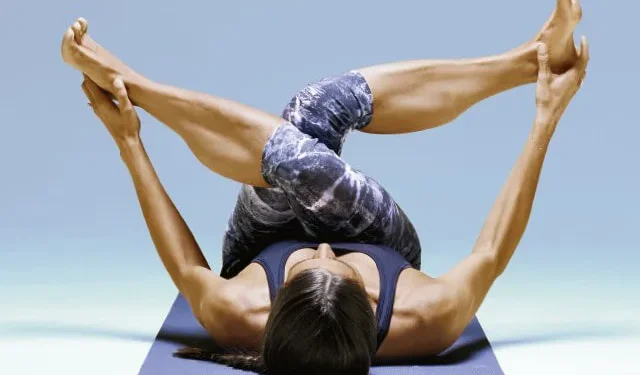Banner Image (Download Photo and Add Here): https://ibb.co/v4WDpdGn
The activity of running is now enjoying a growth period of new-found popularity. However as enjoyable as running is, it is a physically demanding activity. In this regard, running, like any other set of activity, has its own set of challenges, such as sore muscles, recovery times, and injuries. This is where yoga aids tremendously. For runners, yoga is fantastic for improving flexibility, strength, endurance, and recovery speed.
Yoga, like every other activity, is much easier to do when broken up into its simpler building blocks. In this case we have balance, breathing, stretching, posture, and even relaxation. Yoga can improve a person’s running experience to a significant extent. For this reason, we would like to take the time and elaborate on yoga’s benefits for runners with a list of stretches and poses to better equip the reader.
The 200 hour yoga teacher training in India is a comprehensive program designed for those seeking to deepen their personal practice and gain the skills to teach yoga professionally. Rooted in India’s rich yogic tradition, this training typically spans four to six weeks and covers a blend of asanas (postures), pranayama (breath control), meditation, yoga philosophy, anatomy, and teaching methodology. Students often immerse themselves in an ashram or retreat environment, allowing for focused learning and self-discovery in a serene setting. Guided by experienced yoga masters, participants not only refine their physical practice but also explore the spiritual and philosophical dimensions of yoga, gaining a holistic understanding of the discipline. Completing a 200 hour yoga teacher training in India provides an internationally recognized certification, opening opportunities to teach worldwide while fostering personal transformation through discipline, mindfulness, and cultural immersion.
The advantages of yoga for runners
For improved flexibility and better injury prevention, runners consider yoga for its additional benefits. Above all, helping runners, young or old, injury, prevention, and improved recovery.
1. Improves Flexibility
Participants experience the benefits of improved flexibility, enabling them to run smoother and mitigate injuries. Muscles and joints become more limber and supple, improving the body’s range of motion. This enables overcoming the range of alongside spraining and incorrect straining over time.
Loosening and lengthening the hamstrings, calves, and IT bands, yoga stretches specifically target these muscle groups, contributing to enhanced mobility.
2. Yoga’s Benefits on Strength and Stability
Running is great when it comes to improving cardiovascular endurance, but it may not always target the smaller stabilizer muscles required for the control and balance of the body. Yoga allows for the developing of muscles in the core, glutes, and ankles, which provide the required balance and stability, thus allowing for safe and efficient strides during the runs.
3. Aiding Recovery
After an intense training session or long run, yoga encourages soreness, allowing for faster recovery. Call it magic, but yoga’s breathwork and relaxation techniques also encourage the body to activate the parasympathetic nervous system, which helps in reducing inflammation, allowing for the repair of tissues.
4. Injury Prevention
Commonly experienced injuries by runners, like shin splints, Achilles tendinitis, and runner’s knee, can also be prevented through the regular practice of yoga. By correcting muscle imbalances, yoga helps strengthen the muscles and joints, thus building resilience and reducing the stress on high-impact areas.
5. Improves Don’t Exit wrong
Effective and efficient oxygen uptake is essential during runs, and deeply and effortlessly breathing is essential to achieving enduring performance. Pranayama, or breath control, does just that – aids in enhancing performance for runners.
Yoga stretches and poses tailored specifically for runners
Understanding the benefits is only the first step when it comes to yoga. Each runner faces unique challenges, and now, we’ll discuss poses and stretches tailored for targeted problem areas.
Add these to your workout plan if you want to improve flexibility, strength, and recovery.
1. Downward Facing Dog (Adho Mukha Svanasana)
Adho Mukha Svanasana or Downward-facing Dog Yoga pose is great for exercising and stretching your hamstring, calf, and lower back muscles.
How to do it:
* Stand in a tabletop posture and bring your hands shoulder-width apart and your knees under your hips.
* Push your toes, lift your hips, and straighten your legs as best as you can.
* While pressing your hands firmly to the mat, elongate your spine and press your heels towards the ground.
Why it’s beneficial for runners: This pose enhances shoulder and arm strength, especially for runners, while alleviating tightness in the calves and hamstrings.
2. Low Lunge (Anjaneyasana)
This pose helps to counteract the tightening of the hip flexors due to running.
How to do it:
* From a high plank, step your right foot between your hands.
* Drop your left knee, lift your arms, and keep your chest high as you draw your left shoulder back.
* Slightly press your hips forward to stretch your left hip flexor.
Why it’s beneficial for runners: This pose directly addresses tight hips, which is beneficial for maintaining flexibility in the stride and for combatting hip immobility.
3. Pigeon Pose (Kapotasana)
Pigeon Pose is a great relief pose for runners as it addresses tight hips and glutes.
How to do it:
* From downward-facing dog, move into your right knee and pull it forward. Place it behind your right wrist.
* While keeping your hips square to the mat, extend your left leg straight back.
* If comfortable, lower your torso toward the ground, resting on your forearms or forehead.
Why it’s beneficial for runners: The pose provides a deep stretch to the glutes, piriformis, and outer hips, which are common areas of tension for runners.
4. Reclined Twist (Supta Matsyendrasana)
The pose aids in improving runners gait help them in maintaining an active and upright姿勢 while running.
How to do it:
* Start on your back and pull your right knee toward your chest.
* While maintaining your right shoulder on the ground, roll your right knee up and over to the left.
* Extend your arms in a T shape and gaze towards the right hand.
Why it’s beneficial for runners: It helps in improving long distance runners unstable core and lower body.
5. Standing Forward Fold (Uttanasana)
s, a condition that modifies the biomechanics involved in running.
How to do it:
* Remains standing tall, exhale ,and fold forward.
* Bend your knees slightly and keep your arms down, relaxing your body completely.
* Keep your knees bent while folding forward in a straight line.
Why it’s beneficial for runners: Enhances a sense of body awareness.
How to do it:
* Stand with your feet hip-width apart.
* Bend your hips and bring your hands towards the ground while simultaneously folding forward.
* Bend your knees softly, if that aids in reducing strain.
Why it’s beneficial for runners: It alleviates tightness in the hamstrings and lower back and enhances circulation to the shins and calves.
Advanced Yoga
Mountain retreats and yoga teacher training in rishikesh offer yoga teacher training course that travel deep into yoga’s realms, making it perfect for beginners and seasoned practitioners. Such centers are famous for their modern and wellness-oriented transformation blending age-old arts, greatly improving one’s grasp of yoga’s influence and benefits to one’s mental and physical health.
Tips for Integrating Yoga into Your Running Routine
1. Start Small
Shorter sessions of yoga can be just as effective. After your run, a 10-15 minute session lasting will do wonders.
2. Focus on Problem Areas
Concentrate on the places you feel the tightest, and choose poses that work on the hamstrings, hips, and calves.
3. Use Restorative Practices
For to reset your body after a long run or race, rest in humble poses like Child’s pose and Reclined Twist.
4. Consistency is Key
To realize improvements in recovery and in strength and flexibility, integrate yoga into your daily routine.
Run Stronger with Yoga
For runners, yoga has emerged as a vital practice that aids in both recovery and performance enhancement. With yoga, runners can enjoy proper stretching to relieve tension, improve strength, and even follow structured breathing exercises, allowing yoga to lay a solid groundwork for long-term running sustainability. Whether you are a casual runner or gearing up to run a marathon, yoga can easily be incorporated into training routines to help one perform optimally and remain injury-free.
For a more in-depth approach to yoga as a holistic practice, one can look into yoga teacher training course in bali. Participants not only improve their yoga skills but also learn how to integrate strength and yoga in a balanced manner to help execute maximum performance in everyday life and athletics.










